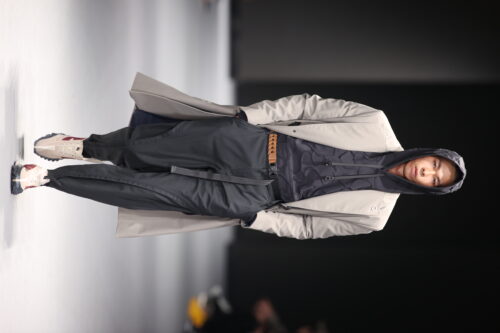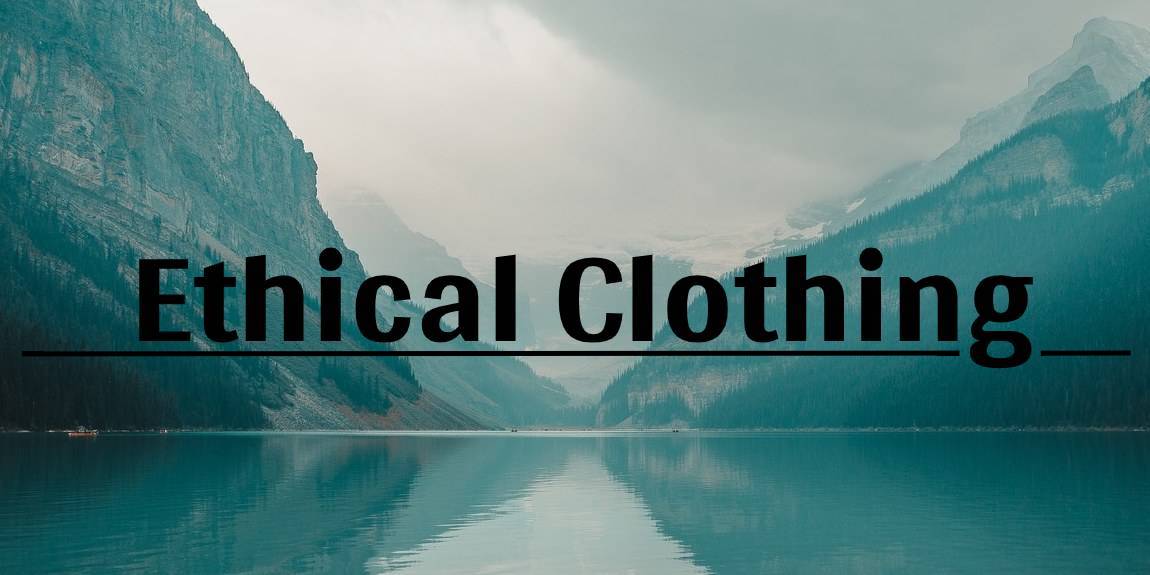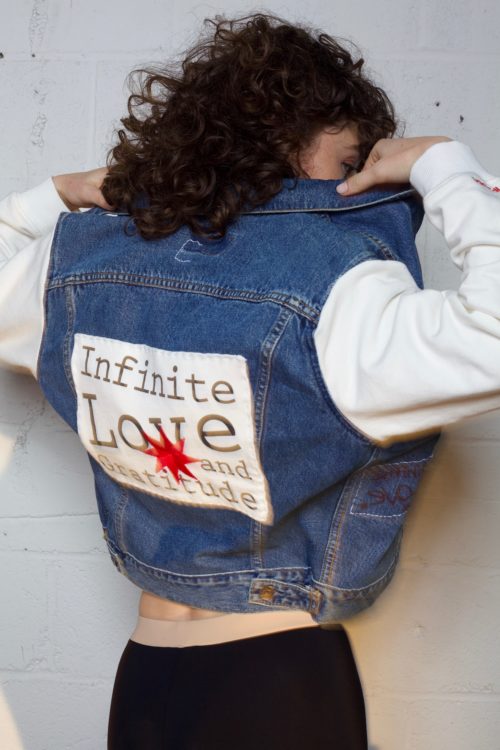Have you ever wondered how a fast fashion brand is different to a slow fashion brand? Or whether fast fashion could ever be slowed down?
In this article we define what both fast and slow fashion means today, compare the differences between the two, and discuss what principles of the slow fashion movement can be incorporated into mainstream fashion for it to become more ethical.
DEFINITIONS OF FAST AND SLOW FASHION
Fast Fashion is, put simply, items that are manufactured quickly in response to consumer demand for cheap and trendy attire; think H&M, Zara, BooHoo, Missguided, the list goes on. The purpose of fast fashion is to meet consumer demand for mass-produced fashionable clothing at record low prices….which tends to fly in the face of ethical clothing and slow fashion principles.
Slow Fashion on the other hand is a movement that acts in favour of ethical and sustainable production methods to protect people and the planet. From initial design to purchase, slow fashion brands put care and thought into every step of the process, creating items that are built to last rather than worn once and thrown away. Instead of focusing on short term profits, the slow fashion movement is making a long term commitment to protecting our future on this planet.

HOW DID FASHION BECOME SO FAST?
Prior to the 1800s yarn and fabric were spun and woven by hand, and it was common for people to own just a few outfits. It was usual practice to adapt clothing to meet seasonal changes, and new purchases were made just a few times a year. This sounds very similar to the principles of the slow fashion movement we see today!
In the mid-1800s however, technological advances – such as sewing machines – vastly reduced outgoing costs and shortened lead times, and profits rose for clothing companies. Dressmakers sought another opportunity to save money by outsourcing work to individuals that could work from their own homes at much lower wages, known as ‘sweaters’.
The improvements to production unfortunately brought about new issues – factory conditions were poor, and cotton production was a dangerous and demanding job: hazardous chemicals including arsenic and mercury were frequently used, sometimes having fatal consequences for both workers and the people who wore them.
Over the next half of the century clothing production continued to evolve and gain momentum, but we notice a real shift occurring during World War II: clothing was rationed, regulations were placed on design, and material stocks were in short supply. With this in mind, and in an effort to boost morale, the government introduced an initiative whereby upper-class clothing designers would create a range of ‘utility’ styles for all: standardised outfits were mass-produced, and for the working classes this meant that for the first time, they had access to better quality clothes within their budget.
With society becoming accustomed to this new level of mass-produced clothing, demand increased on a large scale over the course of the next 50 years. Companies searched for new and innovative ways to keep costs down and maximise profits, the most popular approach being outsourcing labour to emerging countries like India, Bangladesh, Pakistan, Cambodia, among others. These locations became notorious for having some of the worst working conditions on the planet, but the low cost and potential profits were, and still are, too enticing for brands to refuse.We may not be able to pinpoint the exact moment in time when fast fashion overtook slow fashion principles to become the Global production choice, but it’s clear that the concept has been developing gradually, and perhaps a little too quietly, over time.
THE IMPACTS OF FAST FASHION

Swapan Photography/Shutterstock.com
As of today, it is common knowledge that the fashion industry is having a detrimental impact on the environment – with water contamination, waste, and carbon pollution at an all time high, it’s clear that something needs to change.
What you may not be aware of is the effects that fast fashion has on people, specifically garment workers and their families.
LOW WAGES, POOR WORKING CONDITIONS
Fast fashion brands predominantly outsource parts of their production process to garment factories in lower income countries, where labour is cheaper and there are fewer regulations to adhere to. Workers are paid very little, often less than an adequate living wage, and it’s common to have to work long hours to meet unrealistic deadlines.
In some cases the situation has become so dire that garment factory managers have been known to lock the workers inside until the work is complete.
PEOPLE ARE NOT A PRIORITY
From the get go it seems clear that the priority here isn’t people, it’s price, and fashion brands really do hold all the cards: factory managers have little choice but to accept low paying contracts, as to turn down work could put them at risk of going out of business. The knock on effect then begins as decisions have to be made on where to allocate the money: materials tend to carry fixed prices, so loss of funds are recovered by reducing wages, forcing employees to work longer hours, or by cutting corners on health and safety standards.
It seems as though fast fashion brands start with profits, and then work back through sale price, cost of production and materials, and then last up, garment worker’s wages. You might start to wonder how a £5 t-shirt covers all of that, I know we do! But what we do know is that it rarely involves prioritising people over profit, and that is where slow fashion differs significantly: by starting with the people and the origins of materials, there is thought and care at every step. Production might be slower, but we’re all the better for it.
FAST FASHION VS SLOW FASHION – THE PROS & CONS
The real truth about fast fashion has seemingly crept along under our noses for a while now, and while we have revelled in the delights of cheap and trendy attire, we may have been a little distracted from the real truth.
So how is fast fashion different to slow fashion? Here are the pros and cons of each to help you understand the main differences between the two:

SO WHY IS FAST FASHION SO POPULAR?
BALANCING SOCIETY
To some extent, fast fashion is what we have all been waiting for: fashionable items at affordable prices, resulting in a more inclusive society. With more people now having an opportunity to express their individuality and personality via their appearance, what’s not to like about that?
AFFORDABLE
Of course we would love for everyone to be mindful of where their clothes come from, and why the true cost of fast fashion can be truly devastating. At the same time however, it’s important to understand that not everyone has the luxury of spending £100 on a dress for dinner, or £50 on a shirt for a job interview.
Fast fashion has answered so many needs, and as consumers we have driven the industry to where it is today. It’s successful because we are buying it. Because we can.
CONSUMER APATHY
Have we become desensitised, or detached from what is really happening? Is retail therapy blinding us?
As a society we have become quite accustomed to, and accepting of, the price of fast fashion: low prices are the norm, and we are so detached from the reality of day-to-day life in a garment factory that we pay no consideration to the origin of our purchases. It’s almost as though we are in a perpetual state of blissful ignorance.
According to journalist and author Dana Thomas:
“Once we removed that emotional investment from the equation, we cared less about our clothes. And so then we started treating them like fast food.”
THE RISE OF SLOW FASHION

CAN IT FIND A WAY BACK INTO MAINSTREAM FASHION?
Although the fashion industry needs to step up and make improvements, we as consumers also have a role to play, and so does the government. It’s a joint effort that won’t be resolved overnight, but now that, according to this IBM report, ‘57% of consumers are willing to change their purchasing habits to help reduce negative environmental impact’, there is a glimmer of hope that we are starting to head in the right direction. Below are just a few examples of the roles brands, consumers and governing bodies can play.
BRANDS
The question is, can the fast, or ‘cheap’, fashion brands turn it all around and continue to produce on-trend clothing at speed, while also incorporating the ethics of the slow fashion movement? It may be possible.
TRANSPARENCY
In the first instance, brands need to take ownership of their supply chain and acknowledge the issues that are happening.
Take Nike for example: in the early 90’s independent reports revealed multiple cases of abuse and unethical treatment in its factories, resulting in a severe backlash and tarnished brand image. Instead of denying the reports, they set about trying to fix the problem: they audited their supply chain, set up various processes to tackle the issues head-on, and every year they publish their latest findings.
Nike might not be perfect, and they definitely still have challenges ahead, but by addressing the situation instead of trying to bury it, there’s a chance they are committed to fixing it. At least that’s what we’re hoping.
We all know how vital transparency is when a brand is looking to connect with an ethically-minded audience, and people want to find information quickly and easily. Most importantly, we want to feel confident that a company isn’t hiding anything.
INCORPORATING SUSTAINABLE FABRICS (WITHOUT THE GREENWASHING!)

Latest research shows there is an ever-increasing demand for ethical and environmentally friendly products. According to a 2018 Forbes article, a survey across 1,000 people documented that 96% of consumers felt they could contribute to positive change, whether that meant recycling, donating, or buying ethically, but 88% of them wanted brands to help.
With this increased consumer pressure, many brands are now rushing to incorporate sustainable materials into their production methods, but how can a consumer know if a fabric is truly sustainable or is being used as a greenwashing tool?
This is a big question and not one we could answer fully here, but as an example, let’s take organic cotton: conventional cotton is heavily reliant on the use of chemicals in its production methods, whereas organic cotton is grown without the use of any nasty chemicals or pesticides, and so seems like an ideal sustainable alternative.
However, like many things in fashion supply chains, things are murky and not always what they seem: as organic cotton has a much lower yield it can take twice as much water to produce the same amount of cotton as conventional methods. To overcome this at Rare & Fair, we use rain-fed cotton, where cotton is grown naturally without chemical input and without irrigation methods. This alternative is much harder to achieve if you are mass producing for the fast fashion industry, though.
The word ‘organic’ appears to be a powerful marketing tool, and many brands have jumped on the opportunity to switch from standard cotton to organic cotton in an effort to market themselves as sustainable. With that in mind, it’s important that customers know a brand is committed to using ethical and sustainable materials across the board, and not just as a marketing ploy or on a select few collections. With so many brands catching on to the success of ’green’ marketing, the UK’s Competition and Markets Authority (CMA) have recently issued an update to say they will be conducting a report to vet companies to curb any untrue claims or misleading information, a great step forward!
So what can a shopper do? The main advice we can give is to do your own research and never take a brand’s sustainability claims at face value, remember to ask questions, and if you don’t get the answers, walk!
EMBRACING CIRCULAR FASHION
Another method that is starting to see some traction in the fashion industry is the idea of ‘circular fashion’ , which ultimately means ‘less waste’. The fashion industry tends to have a linear production line where items are created, worn, worn out, and then end up in landfill. Circular fashion aims to challenge the process, and according to London-based designer Bethany Williams, instead create ‘a cycle of production rather than just a production line.’ It’s a bit like recycling, but with more oomph and longevity.
CONSUMERS
THROWAWAY ’THROWAWAY CULTURE’
Just. Stop. Throwing. Clothes. Away.
According to a BBC article ‘every single second 2,625 kilograms of clothing is burned or sent to landfill.’
Next time you go to buy something new, consider these four questions first:
- Will you wear it at least 15 times?
- Does it match other items in your wardrobe?
- Is it versatile enough to be dressed up and dress down?
- Have you thought about the item for weeks and can’t imagine at least four occasions without it?
One of the best ways to support the slow fashion movement as well as a sustainable lifestyle is to focus on investment pieces over fast fashion. If you’re working hard for your money, then why not make your clothes work hard for you?
If we all adopted a more thoughtful approach and actually considered what might have gone into producing our clothes, we might make more mindful and conscious purchase decisions.
For more tips take a look at our article on 6 ways you can create an ethical wardrobe on a budget. Perhaps you’ll find new life in something old.
THE POWER OF SOCIAL
You have a voice, and never before have we had so much power to be able to use it. Thanks to social media we can not only communicate directly with brands, but we can also publicly question their activities and hold them accountable, and all in real-time.
GOVERNMENT
In February 2019, The Environmental Audit Committee (EAC) released a damning report on the fashion industry, Fixing Fashion: Clothing Consumption and Sustainability. The report produced some key recommendations, including but not limited to: incentives for retailers to improve their recycling efforts, and processes to identify forced or child labour across supply chains. Unfortunately, all recommendations were rejected by the government.
However, if there is one good thing to come out of the coronavirus pandemic, it’s bringing issues in the fashion industry to light: as we have seen in the news, a wave of infections in Leicester prompted visits to garment factories – here the inspectors discovered that those in charge had not put adequate health and safety measures in place to help protect their workers at the start of lockdown, and there were potentially employees who had been forced to work despite having symptoms of COVID. If this is happening in the UK, we can only imagine what might be happening elsewhere.
The incident has prompted the EAC to revisit the 2019 report, and we hope that this time around, the government will be on board to implement industry measures and regulations that will result in improvements throughout the fashion industry. Watch this space!
WILL FAST FASHION EVER BECOME SUSTAINABLE?
The fundamental changes that would need to be applied to the fast fashion business model are so great, we think it is unrealistic that a fast fashion brand will ever be truly as ethical and sustainable as a slow fashion brand. Put simply, if slow fashion companies could churn out masses of new styles each week without cutting any ethical and sustainable corners, you can bet they would be doing it already.
However, if we can combine the efforts of brands, consumers, and governments, there’s a chance that improvements can be made. With U.S data suggesting that Millennials are increasingly likely to lean towards a more sustainable and ethical lifestyle, we do wonder if at some point, fast fashion companies will find themselves in a sink or swim situation. Taking a proactive approach now may be the best chance they have at adapting their business to what the future holds.
Do you know any fast fashion brands making waves in the fight to be better, or think there are other ways we can tackle our ‘wear it once’ throwaway culture? We would love to hear from you. Share your thoughts below!
Rosalyn Bowen – Rare and Fair




